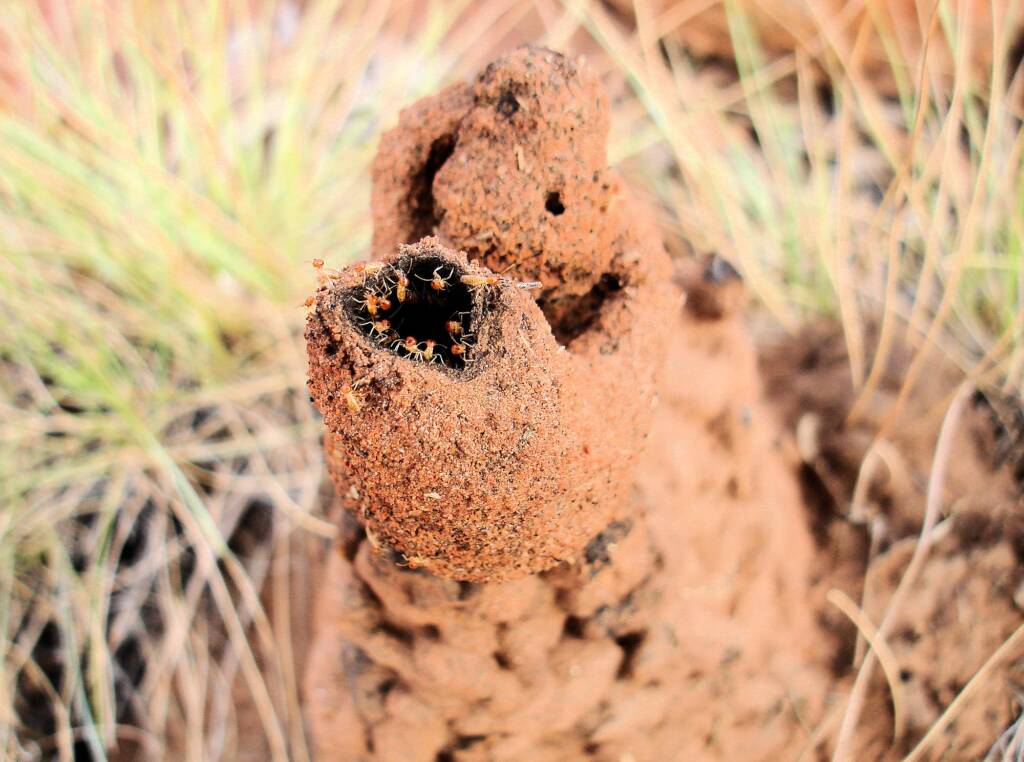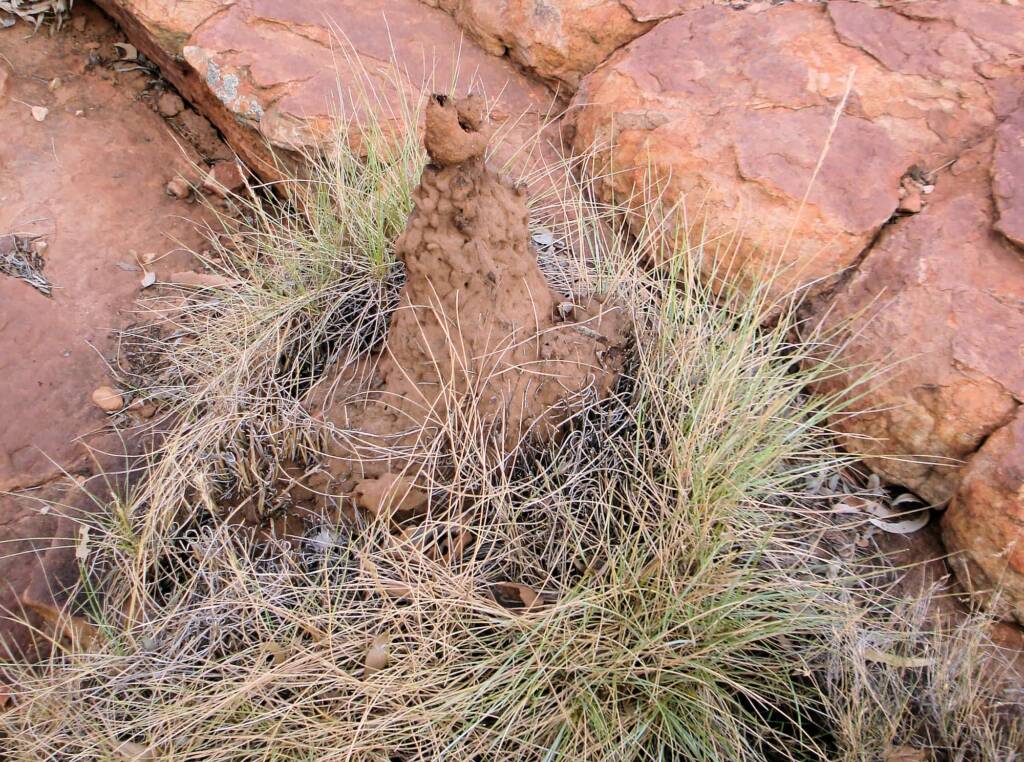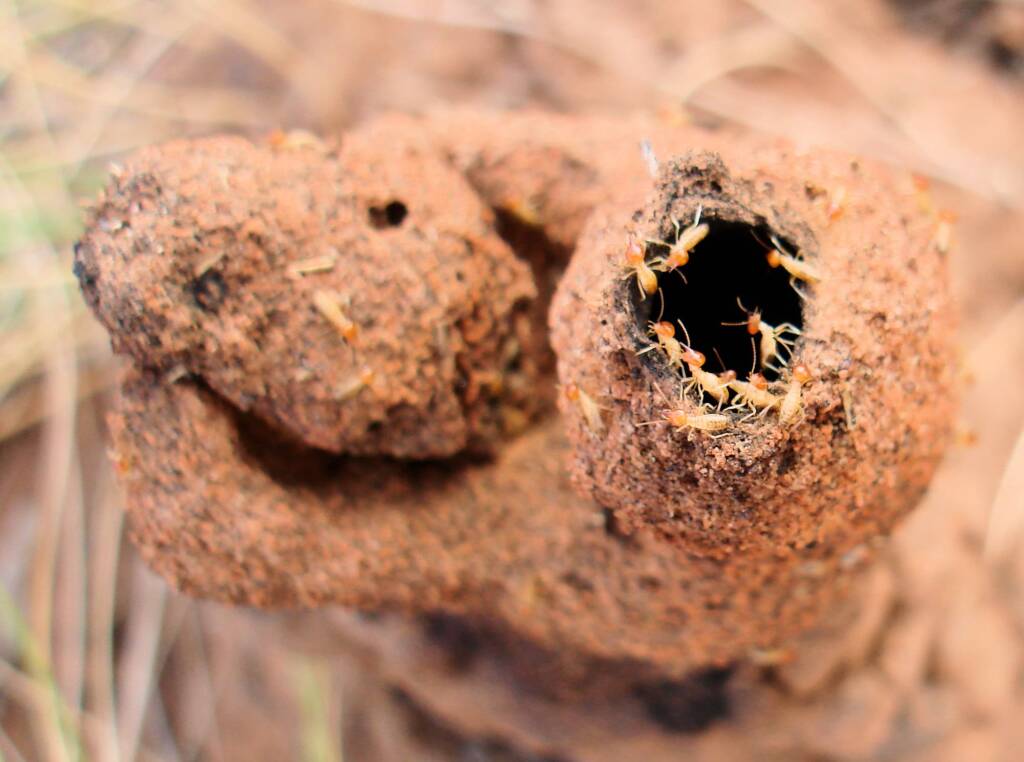WNP Home | Accommodation | Attractions | Fauna | Flora | Images | Tours ◦
There are some 350 species of termites in Australia, with approximately 100 of them found in the Northern Territory. Found almost everywhere, they do play an important role in the food chain, eating and breaking down dead dry plant material that other creatures cannot.
To achieve this, the termites have special micro-organisms in their stomach that enable them to feed on non-nutritious plant matter. Being part of the food chain, the termites are then eaten by other creatures.

Apart from the Hymenoptera (that include the bees, ants and wasps), termites are the only insects that live in social groups. As in such social groups, there is a division of labour, with each group (known as castes) having particular roles.
Termite nests are formed either in trees, soil mounds or underground. There are 5 main nest types, with many species building more than one type of nest:
- Ground mounds
- Tree nests (outside tree, connected to internal cavity)
- Pole nests (on human structures such as fence posts and telegraph poles)
- Subterranean nests (underground, in soil, stumps and tree bases)
- Tree wood (inside the tree)
The termite mound pictured here was found growing in the midst of a clump of spinifex grass at Kings Canyon whilst on the ‘Rim Walk’. It was about half a metre tall.








Images © CK Leel
- Scientific classification
- Kingdom: Animalia
- Phylum: Arthropoda
- Class: Insecta
- Cohort: Polyneoptera
- Superorder: Dictyoptera
- Order: Blattodea
- Infraorder: Isoptera
Footnote & References
- Creature Feature, Terrific Termites, Junior Ranger Review, Issue 3 2005, ISSN 1036-966x, Northern Territory Parks and Wildlife Service, https://depws.nt.gov.au/__data/assets/pdf_file/0010/249355/jrr05_issue3.pdf
